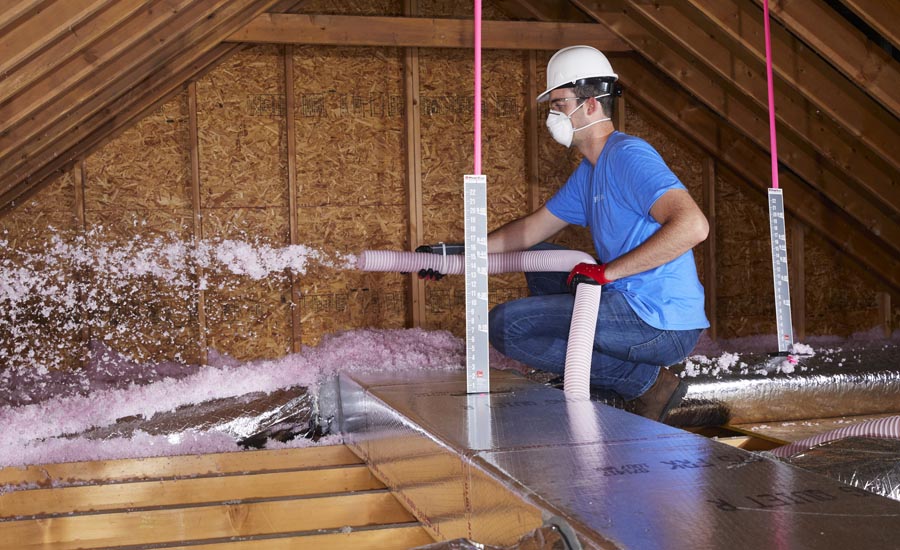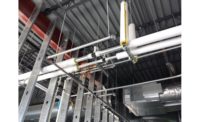Managing service demand peaks and valleys is a challenge nearly every HVAC contractor encounters. While extreme weather will keep the service calls, texts, and e-mails rolling in, what about less-active periods when the customer service lines are quiet? A new business opportunity during slower times lies in the attic. A home’s unconditioned space is often an overlooked opportunity for HVAC contractors to keep their techs busy, diversify service offerings and provide a more comfortable, energy-efficient environment for customers.
Out-of-sight, out-of-mind is often the case when it comes to a home’s attic. Yet this part of the home can hold the key to addressing frequent homeowner complaints such as:
- The room that is perpetually hot or cold;
- The space that has a funny smell or consistently triggers sneezing;
- Unusual spikes in energy bills; and
- Dirt and debris around registers.
A system approach including proper amounts of insulation engineered for the conditioned space coupled with properly sized and sealed, leak-free duct work can help improve a home’s comfort profile and energy efficiency. This system approach can also help diversify a contractor’s business offerings and serve as a point of differentiation in the market.
Below, we look at how insulation plus ductwork inspections and retrofitting present a business case for leveraging a home’s attic.
Beyond thermal – Re-thinking insulation: Sometimes a material gets such a good reputation for its performance in one area, that its other performance properties are overlooked. Such is the case with insulation. While energy efficiency and thermal performance are at the heart of insulation’s value proposition, adequate levels of insulation in the attic support other performance properties including moisture mitigation and noise control.
When it comes to insulation, it’s important to have sufficient insulation and to “right-size” it to the needs of the space. As every contractor knows, codes are only the starting point when it comes to a home’s energy performance. And as America’s homes are aging, energy codes are rising. The insulation levels that met code during the U.S. housing boom of the late 1990s fall significantly below today’s codes. A look at the minimum prescriptive wall and ceiling insulation R-values found in the 2012 International Conservation Code (IECC) reveals that more than 90% of U.S. homes are under-insulated.
So where should an HVAC contractor begin when addressing the unconditioned space? Assessing current insulation levels in a home’s attic is the starting point. Including an attic inspection as part of routine HVAC maintenance or diagnostic calls provides an opportunity to achieve a more comfortable, and energy-efficient home – and a more satisfied homeowner.
Attic insulation inspections as part of HVAC service and maintenance calls also support a “system approach” to home comfort – integrating proper ventilation, air distribution and insulation products to maximize HVAC equipment performance and deliver optimal comfort. And from a thermal vantage, a system approach integrating proper ventilation and insulation helps a home’s HVAC equipment manage and mitigate excess heat in the attic more effectively.
Beyond thermal efficiency, many attic areas tend to share some common trouble spots that contribute to energy loss and higher energy bills. Roof eaves present an opportunity for wind wash and open areas in the eaves present opportunities for ice damming and damage to the home’s roof. Adequate insulation levels coupled with proper ventilation and air sealing solutions can help protect against sagging roof decks which can lead to premature roof failures.
The news cycle is also raising awareness of another area impacting homes, including the attic region and HVAC. COVID-19 has helped generate a national conversation about indoor air quality. Reducing moisture can help manage threats to indoor air quality. Water is an easy breeding ground for mold and fungi to reproduce. As such, the material choice matters when it comes to attic insulation. Moisture can not only serve as a nutrient source for mold and fungi, it can also be a food source for pests. Moisture infiltrating the attic can also present a risk for corrosion, damaging equipment. As a natural sound absorber, insulation can even assist with noise mitigation.
Assuring ductwork integrity in the attic
The unconditioned space also presents an opportunity to boost comfort via ductwork. Some of the most important parts of a home’s HVAC system are invisible -- including the ductwork that distributes air to every room. Preserving the integrity of ductwork in homes where ductwork is outside the conditioned space (typically in the attic) is critical to insuring homeowners receive the full benefit of a high-efficiency comfort system.
Again, a look at today’s building environment indicates codes are getting tighter. Most codes are requiring duct leakage of less than 10%, although best practices are trending toward 5% or less. However, the data shows the integrity of ductwork in most homes needs improvement. In fact, an average home loses up to 30% of the air that moves through its duct system due to leaks, holes, and poor connections. Problems in the ductwork’s supply and return systems– holes, loose seals, faulty connections, etc. – threaten the integrity of air quality and energy efficiency.
A duct inspection is the first step in measuring energy loss in the attic. Depending on the inspection findings, a second step may be a duct retrofit. Detecting ductwork issues, right-sizing ductwork and mitigating problems can ensure a home’s HVAC equipment delivers full performance.
Contractors can use attic ductwork as a point of differentiation in the market. Often, the presenting problem may be connected to other issues. Research shows that beyond the immediate problem, top homeowner concerns include air quality, saving money on energy bills, and keeping rooms comfortable.
Despite the opportunities ductwork presents to improve comfort, the topic has not been discussed at length. Today’s homeowners need education about how their system does more than keep them warm or cool. Contractors should begin the conversation before the technician’s service visit. When scheduling a service call, explain that the diagnosis requires evaluating the system and a technician will need access to the attic. As the pandemic has ushered in concerns about touchless systems, contractors may opt to prepare a digital video to offer a touchless demonstration of the approach and support their contact-free marketing efforts.
Beyond touch-free services, don’t dismiss the value that technology can bring to the homeowner conversation. The saying that a picture is worth a thousand words can be dramatized effectively with infrared cameras. For example, infrared technology can detect and transmit an image of cool conditioned air leaking into a hot attic – providing a homeowner with a visual that demonstrates lost energy dollars. Analogies can also help contractors visualize the consequences of poor ductwork. In market tests, consumers responded less to data showing a 30% reduction in fuel efficiency than to a visual that equated lost air from the HVAC system leaking to 30% of the fuel pumped into a vehicle ending up on the ground and not in the tank.
Lessons from the field: Applying insights
Homes in regions where ductwork is located in the attic provide a particularly opportune market for HVAC contractors. Ductwork in a home’s attic is relatively easy to access and can help keep business steady even when the peak demand of summer subsides. And by identifying problems in the attic that reduce comfort, HVAC contractors can preempt customer callbacks.
An example from Florida illustrates the opportunity the unconditioned space presents. IERNA’s Heating, Cooling & Plumbing in Tampa completed a pilot collaboration with Owens Corning Air Distribution Group and four other contractors in the U.S. The pilot evaluated a residential duct inspection and retrofit service. Key insights from the pilot suggest a home’s ductwork presents an opportunity for contractors to grow their business and address consumer trends. Some of the opportunities include:
Opportunities to tackle hidden energy loss: From advanced fuel cells to high-efficiency HVAC systems, consumers are looking for responsible approaches to energy utilization. However, about 20-30% of the air that moves through a home’s ducts is lost. Duct retrofits present an opportunity to reduce energy loss.
Leveraging more time indoors: For many homeowners, pandemic lockdowns blurred the boundaries between work and home. Some experts predict more people will be working from home in the future and staycations are becoming increasingly common. Given that the average person already spends up to 90% of their life indoors, it is likely that the indoor environment will become an area of greater interest to homeowners.
Flattening the labor curve: HVAC contractors have long been aware of the challenges required to “flatten the curve” when it comes to demand for technician resources. When spring/fall maintenance demand slows and peak cooling season subsides, matching labor supply with market demand can be more challenging. Offering services – such as ductwork inspections or attic insulation – that deliver value and can be performed throughout the year can generate consistent contractor revenue and keep techs busy.
Approaching the home as a system and bringing innovative solutions to customers that support the integrity of their home’s systems – and the air they distribute – can differentiate contractors and optimize the labor curve, even in uncertain times. Results from the Florida pilot suggest the attic and a system approach combining insulation and ductwork can benefit homeowners’ comfort and contractors’ bottom lines.




